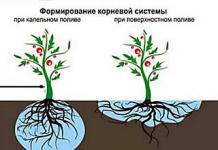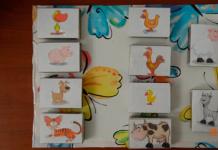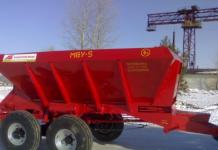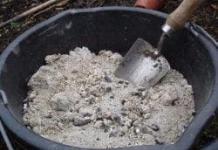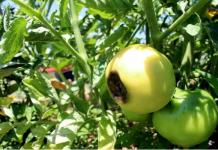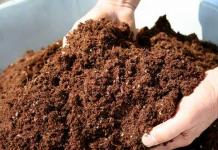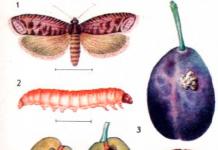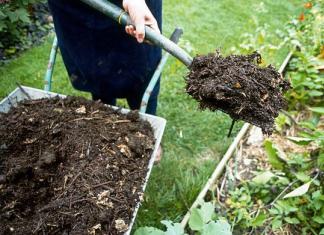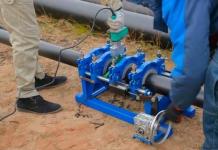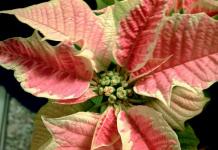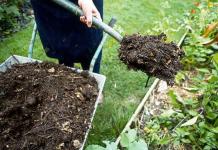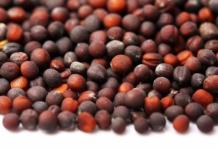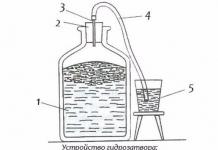A date palm at home is no longer uncommon. This exotic plant from hot countries with spreading leaves has become the rightful mistress of city apartments. In this article you will be able to get acquainted with all the nuances of growing this crop.
Description
The date palm, or date (Phoenix), is a plant of the Palmae family, or Arecaceae. In nature it grows in tropical and subtropical climates. It was mentioned in the works of Pliny, Theophrastus, and Herodotus. It has been grown since the 4th century BC.
It may have one or several trunks. The leaves are imparipinnate. Long, narrow, pointed at the top. Its fruits are eaten, fed to animals, and used to make sugar.
India and Africa are considered the birthplace of all palm trees. Under natural conditions, these trees or shrubs live up to 150 years and grow up to 30 m in height. Their trunk is strong. It is known that it is impossible to shake a palm tree and collect fruits from it. To do this you need to climb onto the plant itself.
Types of palm trees
There are about 20 species of palm trees found in nature.
All of them belong to the palm family. The following varieties are grown as indoor plants:
- common or palmate date (Phoenix dactylifera); One of the most famous. Relatively fast growing. It has a significant drawback - as it matures, the plant trunk becomes bare.
- Robelen date (Phoenix roebelenii O'Brien); Can tolerate slight shade. It grows in height up to 2 m. It is considered one of the shortest. The leaves of young trees may become covered with a whitish coating.
- Canary date (Phoenix canariensis); Its height does not exceed 2 m. The leaves are narrow and hard. The trunk is straight and strong. The petioles are covered with spines.
- curved date (Phoenix reclinata); Forms several trunks. Height - up to 8 m. Leaves are covered with white hairs. There are thorns on the petioles.
- forest date (Phoenix sylvestris); Can reach up to 12 meters in height. Forms a single trunk. The petioles are covered with spines.
- rock date (Phoenix rupicola); One barrel. Grows up to 7 m in height. There are thorns on the petiole.
- Ceylon date (Phoenix zeylanica Trimen); A tree with one trunk, the height of which reaches up to 6 m. The leaves are short, with thorns on the petioles.
Complex, feathery leaves are the main advantage of domestic species
Palm cultivation began indoors in the 19th century. All of them are highly resistant to pests and diseases. Not demanding about personal care. Flower shops offer different types of these plants, but the most preferred for the home is the date palm.
The dates on the shelves are most often representatives of the genus Phoenix dactylifera (common date). It is cultivated for industrial purposes in Saudi Arabia, Africa, Iraq, and Iran. You can grow dates from its fruits at home.
Growing from seed
Sprouted seeds
Any gardener, before planting this plant, should know that the date palm can reach a height of up to 2 meters. Therefore, you should take into account that you will need a lot of space to maintain it. The best time for planting is February - March.
Selecting a seed to plant
To obtain planting material, just go to the nearest grocery store. There is no need to specifically purchase their seeds. You can buy fruits. Eat the pulp and plant the seeds.
Date fruits contain a large amount of microelements, amino acids, and vitamins. The most popular are berries of Iranian origin.
Seeds for planting should be:
- freshly extracted from the pulp
- without mechanical damage
- no traces of insects or diseases
The main condition is that they should not be subject to heat treatment.
Old seeds that are more than a year old may lose their viability. When purchasing dates for planting, you need to look at the packaging date of the product.
Seed preparation
Another way to germinate seeds is with cotton wool. To do this, take a small amount of cotton wool. Moisten it generously with water. Place in a vessel. A bone is placed on top of the cotton wool. Place another moistened lump on top of it. If necessary, the cotton wool is moistened with water. The seed is kept in such conditions until it swells.
Instead of cotton wool you can use:
- sawdust
- hydrogel
- gauze
Some gardeners, for better germination, water the seeds with boiling water or scratch them with sandpaper, then plant them. But a safer way is to germinate the seeds in damp vermiculite. When the first roots appear, they must be transplanted to a permanent place in the soil.
Young seedlings
The container for further transplantation is chosen to be deep, since the plant has long roots. But it shouldn't be too narrow. Its volume should be 20–35% larger than the previous one.
It is better to opt for light-colored containers made of plastic or wood. They heat up less and evaporate moisture.
When choosing a place for a palm tree, you need to take into account that the plant does not tolerate:
- drafts
- low air temperatures
- direct sunlight
The palm tree container should not be placed on a cold, stone floor or windowsill. As soon as the air temperature outside rises above 12°C, you can safely move it outside.
Soil selection
The soil for planting is chosen to be loose
With lots of nutrients. It should be breathable and allow water to pass through well. There is a special soil for palm trees in stores.
Universal soil is also suitable for indoor plants. But you can do it yourself.
To do this, take in equal parts:
- sand
- sod land
- compost or humus
Superphosphate can be added to the finished soil. Proportions – 1 tbsp. l. for every 3 liters of soil mixture.
Another soil option:
- 2 parts each of leafy, turf soil
- 1 part sand, peat
- handful of coal
- weak solution of potassium permanganate
- boiling water
- roasting in the oven (20 minutes)
- in the microwave (3 minutes), etc.
Landing rules
For convenience, you can plant the seeds in peat tablets. After the seedlings emerge, they can be placed in the soil along with the tablet.
The layer of soil above it should be about 1 cm. Sphagnum moss can be laid on top. For its germination, the pot should be placed in a warm place - 20 - 25oC. The soil surface should always be slightly damp.
To create a greenhouse effect, the top of the pot can be covered with a bag. But at the same time, the shelter must be regularly removed and the soil ventilated. If the plant was planted in the hot season, shelter may not be needed.
When planting a seed directly into the ground, it is placed vertically in the soil
The first sprout can be seen only after 3 – 6 months. But fresh seeds can sprout within 20 to 26 days. Seeds that have been stored for a long time take the longest to germinate. After germination, the container with the plant is transferred to a well-lit place in the house.
If more than one growth grows in one pot, they are transplanted when they reach a height of 10 - 15 cm. The diameter of the new container must be at least 15 cm.
The first few years the date palm is not particularly decorative. Every year 1–2 elongated, narrow new leaves appear. Compound pinnate leaves are formed in the 3rd to 5th year of life. It cannot be pruned at this time. The plant shows all its beauty only 5 - 7 years after planting.
Growing conditions
Considering that these are plants from hot countries, it is necessary to create the most suitable conditions for it.
The home date palm can reach a height of up to 2 m. To grow it, you need to choose a spacious, bright room. A mature tree requires a lot of free space, so the room where the palm tree will grow should have a minimum of furniture.
This plant grows quite slowly. If a gardener decides to grow a palm tree from a seed, it will reach impressive size only after ten years.
Lighting
In its natural environment it grows in direct sunlight. But domestic date palms cannot grow in such conditions. The scorching sun can burn its leaves. The best place for it is next to a window facing south, west, east. On hot days, it is recommended to shade the tree.
The palm tree must be regularly rotated, that is, the location of the leaves in relation to the light must be changed. Otherwise, the plant's leaves will only grow well on one side.
In daylight
If the plant was not able to provide a sufficient amount of sunlight during the autumn-winter period, in the spring it must be gradually accustomed to the sun. You should do the same with an adult plant just purchased in a store.
If there is insufficient light, the tree's leaves may droop or stretch out.
Temperature
The optimal air temperature for date palms is 23 – 25° C. In summer it can tolerate heat up to 30°C. But high temperatures must be accompanied by high air humidity. Otherwise, the leaves will begin to dry out.
Date palm in a pot taken out into the garden for the summer
In winter there comes a period of rest. The room temperature should be low - up to 18° C, but not lower than 14° C. Sudden changes in temperature have a detrimental effect on them.
In spring, the plant can be taken out onto the balcony or loggia. The temperature should not be lower than 12°C. They are first taken outside for an hour, then the time spent in the air is increased. If there is a threat of drafts, the plant is brought indoors at night. But it is better to wait for stable warm air temperatures. Regularly moving the plant from place to place can have a bad effect on it.
To provide the tree with the optimal temperature, it is necessary to take into account the plant variety.
So, for wintering the Robelen date requires an air temperature in the range of 16 - 18 ° C. The Canary can tolerate a state of rest well at 8 - 10 ° C.
The room in which the palm tree is kept should be regularly ventilated.
Rules of care
Date palm care includes:
- watering
- feeding
- pruning
- transplant
Watering
For irrigation use settled, soft, warm water - about 20 ° C
In nature, palm trees grow in conditions with little rainfall. The plant has long roots, thanks to which it can obtain water even in the absence of rain. But in the house she needs to provide a sufficient amount of moisture.
- If water collects under the pot, it must be drained. Wipe the bottom of the container. Do not water it with hard, chlorinated water. Watering with hard water can cause chlorosis.
- In the warm season, you can spray the leaves daily. Once a week – soft shower. During these procedures, moisture should not enter the soil. The top layer of soil should be covered with waterproof material.
- If the plant was planted from a seed, it needs to be watered occasionally before the sprout appears. The soil in the pot should be almost dry at the time of watering.
- The ground under the young palm tree is moistened as the top layer dries - 2 - 4 cm. The greatest amount of moisture is required from April to August. In winter, the amount of watering should be minimal, as the plant goes into a dormant state.
Top dressing
Flower shops have special fertilizers for palm trees. They are best suited for feeding the plant. The substances are also suitable for decorative deciduous houseplants. They contain the largest amount of nitrogen. This nutrient is responsible for the vigorous growth of green mass.
You can use the following fertilizers:
- Good power
- Uniflor-growth
- Bona Forte Housing and communal services
- Ideal
- Garden of Wonders
- Etisso
- Tsniflor-micro
- Agricola
- Pokon
- Giant, etc.
You should choose drugs in liquid form. If fertilizers are in dry form, they must be dissolved in water. Substances are added to pre-moistened soil. All fertilizers should be applied in accordance with the instructions. Like any other crop, it is better to underfeed a palm tree than to overfeed it.
There are also fertilizers in the form of tablets and sticks. They are easy to use - you just need to stick them into the ground in a pot with a tree. But some gardeners do not recommend using such preparations, explaining that the use of such substances may cause harm to plant roots.
Both mineral and organic substances can be used to fertilize it.
You can use potassium nitrate. Proportions – 10 g per 1 bucket of water.
In the cold season, preparations for palm trees should contain the least amount of nitrogen.
A tree moved to the garden for the summer can be fed with chicken droppings, cow manure in granules, or with an infusion once a week. The proportions for preparing a solution from droppings are 1:20, for mullein – 1:10.
You can also feed by leaf.
Nutrients are allowed to be added only 2 months after transplantation. The plant should grow stronger in its new location. During this time, she will have enough of the substances that are present in the soil.
Nutrient mixtures should not be applied to sick, insect-infested trees.
Signs of battery shortage
- If there is insufficient nitrogen in the soil, the leaves of the palm tree become lighter in color and the plant itself stops growing.
- During a lack of potassium, the leaves of the plant become covered with bronze-brown spots. Over time, they can curl and dry out.
- Magnesium deficiency is manifested by the formation of a yellow edging on the edges of the leaf blade.
Trimming
When pruning a palm tree, you need to be extremely careful. It is recommended to remove only yellowed, severely drooping, damaged leaves of adult plants. The plant cannot be pruned for the first few years.
The top part of the palm tree should not be trimmed, since this part is where its growth point is located. Trimming the top can kill the plant.
You can’t cut off yellow leaves right away. You must wait until they are completely dry.
Air humidity
The optimal indoor air humidity should be 50 - 70%. During the heating season, you should not keep a palm tree near the radiator. Its leaves must be wiped regularly with a damp cloth.
In summer, in dry weather and hot days, the leaves should be sprayed with warm water once a week.
Does the date palm bear fruit at home?
It blooms with yellow flowers collected in a brush. But you won’t be able to see them indoors. The palm begins to bear fruit when it reaches a height of 10 - 15 meters. This is impossible indoors.
Another important detail is that in order to produce fruit it is necessary to plant 2 trees – male and female.
Features of transplantation
The date palm is difficult to transplant.
The procedure is necessary in 2 cases:
- the volume of the pot is not able to accommodate the roots of the plant
- the plant was overwatered and the roots began to rot
Trees can only be replanted in spring.
When replanting, the depth of the pot should accommodate the entire length of the plant's roots. If the roots begin to protrude from the drainage holes, this is a signal that the plant needs urgent replanting.
The young palm tree is replanted every year for the first 5 years. Subsequently, as it grows. Usually every 3 years.
The roots of the plant are very delicate. They are easy to damage. Therefore, they replant it with a clod of earth, using the transshipment method.
Before removing the palm tree from the pot, water it generously in advance. If the plant cannot be removed from the pot, it must be broken or cut.
The new pot should be at least 4 cm larger in diameter than the previous one. The vessel must have drainage holes. If they don't exist, you need to make them yourself. In the case of plastic pots, the bottom can be perforated using a calcined nail.
You cannot immediately plant a palm tree in a large container. In such conditions, it may stop growing.
Before transplanting, cover the bottom of the pot with a layer of drainage: small pebbles, broken bricks, gravel, expanded clay, etc. The amount of drainage depends on the size of the plant. The larger the tree, the more expanded clay and broken bricks need to be poured under its pot. After planting, the tree is watered.
If the time has come to replant the palm tree, and its pot is still able to accommodate its roots, to enrich the soil with nutrients, you can sprinkle a new layer of soil on the top of the pot. To do this, carefully remove 2–4 cm of soil from the pot and fill it with new soil. It is recommended to perform this procedure once every 6 months.
The rotting plant must be removed from the container. View roots. If they darken and become soft, the palm tree is dead. It will most likely not be restored. If there are still living roots among the rot, all dead parts of the roots should be removed and sprinkled with crushed coal and planted in the usual way.
Reproduction
Indoors, a date palm can only be grown from seed. Some types of palm trees are propagated by cuttings. For example, the Robelena date. But this method should not be used at home.
Possible problems
The date palm is a non-demanding plant. With proper care:
- compliance with the watering regime
- sufficient heat, light
- regular feeding.
The likelihood of any problems occurring is minimal. Weakened plants are more often susceptible to diseases and pests.
Pests
If the plant's leaves turn pale, or the complex leaves begin to curl and fall off, this may be the reason for the appearance of plant pests on it.
In this article, as an experienced gardener, I share the secrets of growing date palms. I will say that this plant is capricious. If you care for it incorrectly or at the wrong time, it will shed its leaves.
In order for the date palm to grow well at home, it is necessary to create a favorable temperature regime for it. You should add water on time, but do not allow the roots to rot. Let's take a closer look at decorative culture!
Its second name is Phoenix. The plant belongs to the palm family and has more than 15 species. In the wild, the date palm can be found in Europe and Asia. This culture has been known since ancient times. The first mentions of it were before our era.
It is interesting to note that the phoenix, growing in the wild, reaches a height of 28 m. The plant produces tasty, healthy fruits, for which it is highly valued. The date palm is grown on an industrial scale. Its juice is used to produce sugar.
Beginning gardeners are interested in whether it is possible to grow a tree from a seed. Before answering this question, you should study the features of decorative culture.

In what conditions does the tree take root?
A phoenix growing in the wild is a large tree or bush with squat leaves. If you grow the crop correctly at home, it will reach a height of 2 m. I advise you to place it in a room where there is almost no furniture. The date tree is often grown from the seed. I note that this method of reproduction is the most reliable.
Gardeners grow phoenix exclusively as an ornamental crop. It does not bear fruit at home. Only those trees that reach a height of 15 m bear fruit. In order for the seeds to quickly germinate in the soil, you need to sow several pieces in a pot.
The soil for the plant should be:
- light;
- fertile;
- drained.
It is better to use fresh date pits for planting. Planting material of candied and dried fruits will do. The main condition is that dates should not be subject to heat treatment.

The seed germinates slowly. To get sprouts faster, you need to rub it with sandpaper, thus breaking the outer shell. Prepare the soil mixture yourself: take fresh sawdust, clean sand, peat, and mix in equal proportions.
Correct placement of seeds
Plant the seeds vertically, deepen them by 1 - 1.5 cm. Place the container in a dry, well-lit place. The palmate date germinates well at temperatures from + 21 to + 30 degrees. I advise you to water it as needed.
Make sure that the soil is moist, but remember that the root system of future plants should not suffer from excess water. To retain moisture longer, cover the soil mixture with sphagnum (moss).

Seedling care
The date palm is a capricious crop. The sprouts may hatch in 3 or 6 months. As soon as you see them, move them to a darkened room. I note that planting material does not respond well to direct sunlight. I advise you to regularly spray the soil using soft water.
When your mini-palms grow 16 cm, pick them up and transplant them into separate containers. Prepare a soil mixture of 40% humus, 10% peat soil, 10% sand, 20% turf soil and 20% leaf soil.
In order for dates to grow well at home, you need to add 15 g of charcoal to this mixture.
Drainage made of expanded clay and sawdust should be placed at the bottom of the pot. If you grow a date palm from a seed, be prepared for it to form leaves in its fourth or fifth year. The growing point of this crop is at the top of the trunk, for this reason it cannot be cut off.
I would like to note that the phoenix does not need a haircut to promote the formation of the crown. Leaf arrows should receive enough light. I advise you to rotate the container around its axis. Thanks to this, the crown will form evenly.

How to care for a phoenix
Keep your date palm exposed to light in a heated area. Ventilate the room periodically, but avoid drafts. In winter, the plant has a dormant period. At this time, I recommend keeping it at a temperature of + 13 to + 15 degrees. In summer you need to spray the leaves; the scorching sun can harm them.
Phoenix perceives fertilizers positively. In spring and summer, I advise you to feed it with organic matter and mineral compounds. Apply fertilizer once a week. In the fall, I recommend feeding once every 2 weeks. In winter, fertilize your phoenix as needed. Apply complex formulations once every 30 days.
Watering should be regular but balanced. I advise you to use boiled or settled water at room temperature. The roots should not be allowed to suffer from excess moisture, otherwise fungal diseases will occur.
In order to protect the root system from waterlogging, you need to put drainage on the bottom of the pot (this can be broken expanded clay). Plants that are not yet 5 years old need to be replanted. Any indoor culture does not tolerate picking. Adult phoenixes need to be replanted as needed.
Carry out the picking carefully, try not to injure the roots and fragile leaves. I recommend transferring plants from one pot to another along with a lump of earth. The date palm takes root in a deep container, as it has massive roots.
Replant plants in a pot 4 cm larger than the previous one. Don't forget to place a drainage layer on the bottom. If you think that the phoenix does not need picking, remove the top layer of soil and replace it with a new one.

Pests, possible diseases
If you do not maintain your date palm correctly, it will be attacked by pests:
- spider mites;
- scale insects;
- Scale insects.
To overcome these insects, you need to correct your mistakes and then properly care for the tree. Pests feed on leaf sap. To combat them, use a solution of liquid soap and vodka: add 30 ml of vodka and 10 ml of liquid soap to 1 liter of water.
If this treatment does not produce results, it must be repeated after a week. I advise you to apply the solution to the trunk and leaves, it is advisable that it does not come into contact with the soil mixture.
If the damage is extensive, the plant should be treated with insecticides. Actellik is popular today. Dangerous diseases include spotting and pink rot. When infected, the leaves become stained. If the tree is sick, spray it with a fungicide; carry out the second treatment after 7 days.

Problems and their solutions
It happens that the leaves of a phoenix dry out. The problem is related to low air humidity. To restore the plant, you need to humidify the air from a spray bottle. Don't forget to spray the phoenix leaves! It is recommended to keep it in a room where air humidity fluctuates within 50%.
Remember that ornamental crops require regular care! If you do not wipe or spray the leaves, they will lose their attractiveness, and the plant may be attacked by pests.
Normally, the leaves should not turn yellow. This happens if the owner of the tree does not add water on time. As I already said, you need to water the phoenix in doses. The soil should not be dry for a long time.
To keep the leaves rich in color, you need to spray them. It is very useful to humidify the air.
If you add water frequently, the plant will rot. Darkening leaves are a sign of excess water at the roots.
Treat your tree carefully, do not allow it to become overwatered!
If the root system rots, a specific smell appears and the stem becomes fragile. If you notice such a problem, carefully pull out the plant and inspect the roots, remove the dark, soft ones. If you see at least a few healthy roots, cut off the affected ones and apply crushed coal to the cuts.
In winter, the plant has a dormant period. At this time, the air temperature should remain within + 13 degrees. If you keep the crop in a warm room in winter, it will slow down in growth, as the functions of the root system will be disrupted.
To avoid all these problems, you also need to add nutritional components. As we have already noted, Phoenix loves organics and complex compositions. I do not recommend planting dates in acidic soil, as they will lack iron. The recommended Ph level for this plant is 7.
As you can see, care at home is not difficult, the main thing is to add water in moderation. Do not allow the roots to suffer from excess moisture. In winter, provide the plant with rest, keep it at a relatively low temperature (about +13 degrees).
Dates are one of the most important staple foods for the populations of hot deserts and semi-deserts in the tropical and subtropical regions of North Africa and Western Asia. Their dried fruits are sold in stores all over the world. Some types of dates are also popular as ornamental houseplants.
The date palm is the most important fruit crop of tropical deserts and semi-deserts
Dates are the fruit of the date palm. All the numerous varieties of dates presented on the world market belong to one botanical species - the palmate date (true date palm).
The fruits of some other date palm species are also edible and are used as food by local populations in the regions where they grow, but these fruits are not supplied to the world market.

Dates are the fruits of the date palm
The true date palm is widely grown in North Africa, West Asia, Pakistan and the dry areas of India. Small palmate date plantations are also found on the Mediterranean coast of Southern Europe, in the hot, dry regions of the USA, in Australia and South Africa. This is one of the few plants ideally adapted to the hot, dry climate of southern deserts and semi-deserts.

Dates are widely grown along the Mediterranean coast, including in Southern Europe.
For date plantations, sunny places with underground aquifers or with the possibility of artificial irrigation are chosen. When planting, seedlings are placed according to a pattern of 8 x 8 or 10 x 10 meters, depending on the varietal characteristics and soil conditions. Scions from adult fruit-bearing plants are used as planting material. Date palm seedlings are very heterogeneous in their economic characteristics and are not used for establishing industrial plantations.
When and how do dates bloom?
The date palm is a dioecious plant. Male and female inflorescences are located on different specimens. Date palms are pollinated by the wind. When establishing commercial plantations, for every few dozen female trees, a male specimen must be planted for cross-pollination. Date palms bloom from February to November, depending on the variety and region. The sex of plants can only be determined during flowering. It takes about a year for the fruit to ripen.

Male inflorescences of date palms do not bear fruit, but are necessary for pollination.
Male date palms bloom in large cystic inflorescences consisting of small three-petal flowers with numerous stamens. For better pollination, the blossoming male inflorescences are often cut and hung in the crowns of flowering female trees.
In the old days, cut male inflorescences were often dried and stored in reserve for several years in linen bags to ensure a harvest of dates even if the male pollinator tree died.

Male date palm flowers have three petals and several stamens.
On female date palm trees, the inflorescences are also arranged in large clusters, but they look a little different.

The female inflorescence of a date palm is the basis of the future date harvest
The female date flower looks like a small ball without petals. In case of successful pollination, a date fruit will grow from each such ball-flower.

Female date palm flowers look like tiny balls without petals.
How do dates bear fruit?
Date palms begin to bear fruit early. The first fruits on female specimens appear already at the age of four. By this time, young palm trees do not yet have time to grow a tall trunk, and clusters of dates often end up lying on the ground. On some plantations, such clusters of fruit are tied to supports to avoid contact with the soil, but this is not always done and not everywhere. That is why dates purchased at the market or in a store are strongly recommended to be washed before consumption, especially in countries with unfavorable sanitary and epidemiological conditions.

Young date palms often have fruit clusters in contact with the ground.
Date harvesting is done by hand. This is very dangerous and hard work. Pickers climb trees and use special curved knives to cut off clusters of ripe fruits, then carefully lower them to the ground.

Harvesting dates by hand is hard and dangerous work.
In the northern hemisphere, the date ripening season lasts from May to December. In May, fruits of early varieties begin to be collected in the south of the Arabian Peninsula. The main harvest in most countries of North Africa and Western Asia takes place from August to October.
Picking dates in Tunisia (video)
An adult date palm can simultaneously have from 3 to 20 large clusters of fruits. The weight of each hand usually ranges from 7 to 18 kilograms. The harvest from young trees is small, only 10–20 kilograms of fruits per tree, but every year it increases and by 15 years the trees already produce 60–100 kilograms of dates per year. The yield of mature palm trees in good conditions can reach 150–250 kilograms of dates per tree annually. Palm trees bear fruit for up to 80–100 years or more; there are known cases of regular fruiting of 200-year-old trees.

On an adult palm tree, several large clusters of dates ripen at once during the fruiting period.
An individual date fruit is a juicy, fleshy berry with one large seed. The color of dates, depending on the variety, is yellow, orange, red or brownish. The size of the fruit reaches 8 centimeters in length and 4 centimeters in diameter. Each fruit contains one large oblong stone with a longitudinal groove.

Each date contains one large oblong seed.
Different varieties of dates are used for food either fresh or dried. Fresh dates can only be tasted in the regions where they grow. Dried fruits that can be stored for many months are supplied to the world market. Depending on the variety, they turn out soft, semi-dry or dry.
The benefits and harms of dates
Dates are a very popular sweet treat that can replace candy and sugar. They contain small amounts of B vitamins, carotene (provitamin A) and vitamin K. Among minerals, dates are especially rich in potassium, and also contain calcium, phosphorus, magnesium and small amounts of iron, sodium, zinc, copper and manganese. The high potassium content makes dates beneficial for cardiovascular diseases. The calorie content of dates is very high and reaches 280–340 kcal per 100 grams of product, depending on the variety.
Sweet, high-calorie dates are strictly contraindicated for diabetes and obesity. Healthy people should not overuse this delicacy.

Sweet and tasty dates are just a popular delicacy, but not a panacea for all diseases.
The articles that flood the Internet about the mythical super-health benefits of dates have absolutely no scientific basis.
Yes, dates are indeed one of the staple foods of the poor population of the tropical desert zone, but this happens only for the banal reason that other agricultural plants simply do not survive in the hot and dry desert climate.
What are king dates and where do they grow?
Royal dates are the commercial trade name for the fruit of the Medjoul date palm, grown in many countries in North Africa and Western Asia, as well as in South Africa and the United States. Royal dates differ from other varieties only in their larger sizes and nothing else; their chemical composition is completely identical to other varieties.

Royal dates are the fruits of the large-fruited Medjoul date palm.
Royal date plantation on video
Other types of date palms, their distribution in the wild and in culture
In addition to the most widely known palmate date, there are several other related date palm species. All of them have large feathery leaves, reaching several meters in length, and are dioecious plants (male and female flowers develop on different specimens).
Types of date palms and regions of their growth in the wild (table)
Date palmate
The date palm (true date palm, common date palm) usually grows to a height of 10–15 meters, sometimes up to 25–30 meters. Numerous suckers are formed at the base of the trunks of mature palm trees and are used for propagation. It is generally accepted that the real date palm has not survived in the wild, and all its numerous specimens, found in abundance in the deserts and semi-deserts of North Africa and the Middle East, are wild descendants of cultivated plants and grow on the site of abandoned ancient oases.

Numerous shoots are formed at the base of the trunks of common date palms
The palmate date is very light-loving and tolerates high temperatures, strong winds and dust storms that often occur in deserts. Tolerates soil salinity relatively easily. This palm can grow on clean sand and is very drought-resistant, but only if its roots reach deep underground water, otherwise it needs regular irrigation. In the dry climate of deserts and semi-deserts, the palmate date easily withstands short-term frosts down to -15°C, but in a more humid climate it dies at -9°C.

The true date palm is one of the very few plants that can grow in desert conditions
The Theophrastus date (Cretan date palm) grows up to 15 meters in height. In nature, this palm is found in southern Greece, Crete and several neighboring islands, on the nearby coast of Turkey. This is the only date palm species growing wild in Europe. The size of the Cretan date fruits does not exceed 1.5 centimeters in length and 1 centimeter in diameter, they have fibrous pulp with a mediocre taste, but sometimes they are still used as food by the local population. This palm produces a lot of basal shoots. The Cretan date can withstand short-term temperature drops down to -11°C.

Date Theophrastus - the only wild date palm in Europe
The date canariensis (Canarian date palm) usually grows 10–20 meters high, but in exceptional cases can reach 40 meters in height. This palm is endemic to the Canary Islands and is not found anywhere else in the wild. Widely grown as an ornamental plant in open ground in Southern Europe, Western Asia, on the Black Sea coast of the Caucasus, North and South Africa, Australia, New Zealand, and in the subtropics of North and South America. In temperate countries it is very popular as a houseplant and greenhouse plant. Compared to the palmate date, the Canarian date is more resistant to high air humidity, which has ensured its wide distribution throughout the world. The Canarian date palm can withstand short-term cold snaps down to -9°C.

The Canarian date is often grown as an ornamental tree in countries with subtropical climates.
On the Black Sea coast of the Caucasus, the Canarian date usually blooms in late autumn, but in some years flowering can begin much earlier, already in mid-summer. If in winter after flowering there were no frosts below -5°C, then the fruits will ripen in December next year. The mature fruits of the Canary date are yellowish-brown, ovoid in shape, reaching 2.5 centimeters in length and 1.5 centimeters in width. In principle, they are edible, but in practice they are not eaten due to the coarse fibrous pulp.

The fruits of the Canarian date look attractive, but are inedible due to the coarse fibrous pulp
The date palm (date palm, wild date palm, Senegalese date palm) originates from tropical Africa, where it is grown almost everywhere. This is a multi-stemmed palm tree with a height of 7 to 15 meters. Its small fruits are edible and are widely used as food by the local population of African countries in its natural growth area. This palm is resistant to salty sea spray and moderate drought, therefore it is widely cultivated as an ornamental plant in the dry tropical regions of many countries around the world. Maximum frost resistance -5°C. Rejected date easily crosses with other date palm species. Such hybrid seedlings often turn out to be significantly worse in their economic qualities than the original parental forms.

Rejected date - wild African date palm with edible fruits
The forest date (wild date palm, Indian date palm, silver date palm, sugar date palm) is native to India and adjacent countries (Pakistan, Nepal, Bhutan, Myanmar, Bangladesh, Sri Lanka). Grows from 4 to 15 meters in height. The fruits are edible and widely used as food by the local population. In terms of fruit quality, this palm ranks second after the palmate date and is actively grown as a fruit crop in the countries of South Asia.

Timber date is an Indian date palm, often grown on plantations in India and surrounding countries.
Sweet sap is also extracted from the trunks of this palm tree and is used to make sugar and palm wine. The forest date is drought tolerant and moderately resistant to soil salinity. Maximum frost resistance -5°C.

The fruits of the Indian date palm are almost as good in quality as real dates.
Date rock (date stony) grows up to 6, sometimes up to 8 meters in height. Found naturally in the mountain forests of India and Bhutan. It is grown very rarely in culture. Its small fruits with large seeds do not exceed 2 centimeters in length. They are edible, but have no economic importance. Maximum frost resistance -3°C.

The rock date is native to the mountain forests of the Himalayas.
The Robelena date (dwarf date palm) grows no higher than 3 meters in height. Found naturally in the forests of Vietnam, Laos and Southern China. This beautiful miniature palm tree is very popular as an ornamental plant in the tropical zone and in indoor culture. Dies in frosts below -3°C. The fruits are small and have no economic value.

The Robelena date is a very popular ornamental plant.
The marsh date (mangrove date palm, sea date) is a medium-sized palm tree, reaching no more than 5 meters in height. It grows in coastal mangrove forests on the sea coasts of India, Bangladesh, Myanmar, Thailand, Vietnam, Cambodia, Malaysia and Indonesia. The only type of date that can grow in marshy soils. This is a very heat-loving plant of the humid tropics, almost never found in cultivation due to its specific requirements for growing conditions. The fruits are very small.

The marsh date is a plant of humid tropical mangrove forests.
The fruits of all types of date palms are edible, none of them are poisonous, but many of them have no economic significance due to their too small size or coarse fibrous pulp.
Fruits of different types of date palms (photo gallery)
The palmate date is the main fruit crop of many tropical countries with a dry climate, produces fruits of the highest quality. The fruits of the Cretan date are occasionally used as food by the local population. The fruits of the Canarian date are not used as food due to the coarse fibrous pulp. The fruits of the Senegalese date are used as food by the local population in Africa. The fruits of the Indian forest date are of good quality and are widely used as food by local residents. The fruits of the rock date are edible, but have no economic value due to their small size. The fruits of the Robelen date are very small and are not used for food. The small fruits of the mangrove date palm have no economic value.
Growing date palms in open ground in the countries of the former USSR
During Soviet times, numerous experiments were carried out on the acclimatization of date palms on the territory of the USSR. However, it was possible to achieve successful growth and fruiting of the real date palm (date palmate) only in the dry subtropics of southern Turkmenistan. All the numerous dates sold in abundance in the bazaars of Kazakhstan, Uzbekistan, Tajikistan and Kyrgyzstan are imported goods brought from more southern countries. In the Black Sea subtropics, the palmate date grows poorly and quickly dies due to excessive dampness.

The Canarian date is often grown as an ornamental plant on the Black Sea coast of the Caucasus
More resistant to high air and soil humidity, the Canary date is widely cultivated as an ornamental plant along the entire Black Sea coast of the Caucasus in Russia (Krasnodar Territory), Abkhazia and Georgia. Individual specimens of the Canary date are also found on the southern coast of Crimea and in Azerbaijan (Baku, Lankaran).
In the collections of botanical gardens in the subtropical zone of the Krasnodar Territory of Russia there are also single specimens of the forest date and the rejected date, but these species have not become widespread.
Date palms should be planted in well-sunny areas protected from cold winds. The soil should be well drained, without stagnant water. The Canary date grows best in soils with a high lime content.

Young date palm plants are less frost resistant than mature ones
Young date palm plants often freeze even during short-term frosts down to -8..-9°C, so they usually have to be insulated for the winter using reed mats or breathable agrofibre. When covering in winter, it is especially important to protect the apical growth point at the base of young leaves from frost. If the growing point is significantly damaged, the palm tree almost inevitably dies. Adult palms, as a rule, are more hardy, but at -10..-12°C they are severely damaged and may die.
In the conditions of Ukraine, any types of date palms in the open ground are very short-lived, even with winter shelter.
Growing date palms at home
Various types of date palms are often grown in indoor and greenhouse culture. The most popular dates are palmate, canarian and robelena dates. The last two are more decorative, but novice gardeners most often experiment with palmate due to the easy availability of its seeds (you can sow seeds from edible dates sold in grocery stores).
Types of dates for indoor cultivation (photo gallery)
The palmate date is often grown indoors due to the easy availability of its seeds. The Canarian date is more decorative in indoor cultivation, and its fresh seeds can be brought from the south. The Robelena date is better than other species for indoor cultivation and is very decorative.
Of course, no fruiting or harvest of dates can be expected under indoor conditions. The indoor date palm is a purely ornamental plant.
At home, it is easy to grow a date palm from seeds from purchased dates:

How to sow date pits correctly (video)
The first feathery leaves appear on date palm seedlings 1–3 years after sowing. If at this age the leaves still remain intact, it means the plants do not have enough light. Date palms are very light-loving. In summer you can put them on the balcony or in the garden; it is very useful for them to be in the fresh air. In winter, the room temperature should be around +15°C. Moderate watering is required; the soil in the pot should always be slightly moist in the depths. Over-drying of the earthen coma and over-moistening are equally dangerous. Pots for date palms are preferably tall, with obligatory drainage holes in the bottom and a drainage layer of pebbles or expanded clay at the bottom of the pot. Young plants are replanted every year in the spring, adults can be replanted less often, once every 2–3 years. For very large old plants growing in large and heavy containers, it is sometimes recommended that instead of labor-intensive replanting, one should limit oneself to partial replacement of the top layer of soil with fresh soil. It is not necessary to spray palm leaves with water, but it is necessary to regularly wipe them from dust with a slightly damp cloth or sponge.

Date Robelena - one of the most beautiful indoor palm trees with feathery leaves
During my childhood, in the spacious and bright lobby of our school, among other plants, there were several large and beautiful date palms in wooden tubs with a capacity of about twenty or thirty liters each. I don’t remember that they were ever replanted, but we were regularly sent to wipe the leaves while on duty.
My own attempts to grow dates from seeds were not particularly successful: the first time, nothing simply sprouted (probably, the fruits turned out to be too old or overheated during drying, they were very suspiciously dry). And the second time, although I managed to wait for the shoots, my dirty omnivorous cat decided that this was some new cat grass, and quickly dealt with the palm seedlings.
DATE PALM
(Phoenix dactylifera), a tree of the palm family, widely grown in hot, arid regions for its edible fruits. In terms of economic importance, it is second only to the coconut palm in its family. North Africa and Arabia are considered the birthplace of the date palm, where it has been grown for 4,000 years. Images of this species were found on ancient Egyptian monuments. Herodotus, Theophrastus, Strabo and Pliny wrote that date palms were grown from Babylonia to the Canary Islands. The height of this tree is 12-30 m, the trunk is almost straight, “shaggy”. The apex is crowned with a rosette of pinnate leaves with leaflets up to 45 cm long. Long paniculate inflorescences emerge from the axils of the leaves, and on one tree they are only male or only female (the plant is dioecious). The fruits (dates) are oblong berries, 2-7 cm long, with a sweet, nutritious pulp surrounding a hard seed with a longitudinal groove.
An annual harvest of 45-90 kg of fruit is considered good, although not maximum, for one date palm. Trees that are 10-15 years old begin to produce it, and their exploitation can continue for another 100-200 years. In some areas of North Africa and Western Asia, dates are a staple food, and their export in dry or dried form is an important source of income. Nowadays, date palms are grown not only in their homeland. The Spaniards introduced them to the New World; commercial plantations in the United States are confined to the southwest of the country.
Collier's Encyclopedia. - Open Society. 2000 .
Synonyms:See what "DATE PALM" is in other dictionaries:
- (Greek). Family tree palm trees Africa and Arabia, delivering fruits, wine, vinegar and palm cabbage. Dictionary of foreign words included in the Russian language. Chudinov A.N., 1910. DATE PALM is a tall tree with very long leaves,... ... Dictionary of foreign words of the Russian language
Date palm- Date palm. DATE PALM, genus of palm trees. Over 15 species, in the tropics and subtropics of Africa and Asia. Cultivated (since the 4th millennium BC for the sake of edible fruits (dates), especially often in the oases of the Sahara and other deserts. Many species... ... Illustrated Encyclopedic Dictionary
- (phoenix) a genus of palm trees. More than 15 species, in the tropics and subtropics of Africa and Asia. Cultivated (since the 4th millennium BC) for edible fruits (dates), especially often in the oases of the Sahara and other deserts. Many species are bred as ornamental... Big Encyclopedic Dictionary
Phoenix (Phoenix), genus of palm trees. Trunks with remains of leaf petioles, at the top a dense crown of feathery leaves. The flowers are unisexual (dioecious plants), wind-pollinated, in paniculate inflorescences. The fruit is a berry with a hard seed, edible in some species.… … Biological encyclopedic dictionary
Noun, number of synonyms: 1 phoenix (10) ASIS Dictionary of Synonyms. V.N. Trishin. 2013… Synonym dictionary
For the term "phoenix" see other meanings. ? Date palm ... Wikipedia
Phoenix (Phoenix), a genus of tree-like dioecious plants of the palm family. The trunks are covered with the remains of leaf petioles, at the top with a dense crown of feathery leaves. The flowers are wind-pollinated, unisexual, three-membered, in paniculate inflorescences. Fruit -... ... Great Soviet Encyclopedia
- (Phoenix L.) genus of plants from the family. palms, subfamily Coryphinae. Partly trees, partly squat bushes, with pinnately divided leaves. Plants are dioecious. The calyx is goblet-shaped, there are 3 petals, in male flowers there are 6 stamens, in female flowers there are 6 staminodes and 3... ... Encyclopedic Dictionary F.A. Brockhaus and I.A. Efron
- (phoenix), a genus of palm trees. Over 15 species, in the tropics and subtropics of Africa and Asia. Cultivated (since the 4th millennium BC) for its edible fruits (dates), especially often in the oases of the Sahara and other deserts. Many species are bred as ornamental. * *… … encyclopedic Dictionary
- (phoenix), a genus of palm trees. More than 15 species, in the tropics and subtropics of Africa and Asia. Cultivated (since the 4th millennium BC) for edible fruits (dates), especially often in the oases of the Sahara and other deserts. Mn. species are bred as ornamental... Natural science. encyclopedic Dictionary
Date palms are beautiful evergreen plants that can be seen today in many homes, offices, and hotel lobbies.
With their help, they decorate rooms, enliven a boring interior, and zone the space. You can buy palm trees in greenhouses or flower shops, but they are quite expensive. Many experienced gardeners grow this type of plant at home from date seeds.
What do date palms look like?
 Representatives of the genus are squat shrubs or trees. Among them, a well-known plant that can be grown from a seed is a tree with one trunk and pinnately divided long leaves, at the base of which there are sharp spines. When flowering, the dioecious plant produces paniculate inflorescences with small yellow flowers.
Representatives of the genus are squat shrubs or trees. Among them, a well-known plant that can be grown from a seed is a tree with one trunk and pinnately divided long leaves, at the base of which there are sharp spines. When flowering, the dioecious plant produces paniculate inflorescences with small yellow flowers.
The date palm, Date or Phoenix in nature grows up to thirty meters with delicious sweet fruits. To obtain its tasty fruits, trees are grown on an industrial scale. Home gardeners are often interested in whether the Date will bear fruit if this flower is planted indoors? In order for the plant to begin to bloom and bear fruit, it needs to grow to a height of at least fifteen meters. Therefore, there is no hope for its flowering and fruiting indoors.
Growing Dates from Seeds
How long does it take to grow a palm tree from seed? If you decide to grow a date palm at home, then know - it will take a long time to grow. For the first two years, she will have enough space on the windowsill.
The seed for planting should be the one that has not undergone heat treatment. Simply by sticking it into the ground, germination can take up to six months. To speed up this process, you should resort to some tricks:

Thanks to this soaking, the first sprouts can be obtained within one to three months. In any case, it is best to be on the safe side by soaking several seeds at once to germinate them.
How to properly grow date seedlings?
 How to plant a seed correctly? The swollen bone is placed in a container with soil mixture, which should consist of peat, sand and raw sawdust (1:1:1). The seed is immersed vertically in the mixture and sprinkled with one centimeter of the same soil.
How to plant a seed correctly? The swollen bone is placed in a container with soil mixture, which should consist of peat, sand and raw sawdust (1:1:1). The seed is immersed vertically in the mixture and sprinkled with one centimeter of the same soil.
The containers are placed in a warm place with an air temperature of at least +25 degrees. Container on top can be covered with glass or polyethylene. Every day the glass needs to be lifted and the soil moisture checked. It should not dry out, but it is also not advisable for the soil to be too wet.
As soon as the sprout hatches, the container is placed in a well-lit place without direct sunlight. Having grown to ten to fifteen centimeters, the small sprout is transplanted into a larger container with a diameter of ten centimeters. Date palms have long roots, so the pot should not be low.
Drainage made of pebbles, charcoal or ceramite is placed at the bottom of the prepared container. A soil mixture is prepared, which can be purchased at the store or prepared independently. Soil for Date should consist of the following components:

The transplanted sprout is well watered and placed on an eastern or western windowsill. It will be needed replant into a new container every year, which should be slightly larger than the previous one. Since the palm tree has delicate roots, it is recommended to replant it so that the plant does not get sick and quickly takes root in the new pot.
 Under no circumstances should a small tree be shaped or trimmed, since its growth point is at the top of the trunk. The date will produce leaves only after three to five years of growth at home. For uniform formation of the crown, it is necessary to rotate the pot around its axis from time to time. The new leaf arrow should be turned towards the shadow.
Under no circumstances should a small tree be shaped or trimmed, since its growth point is at the top of the trunk. The date will produce leaves only after three to five years of growth at home. For uniform formation of the crown, it is necessary to rotate the pot around its axis from time to time. The new leaf arrow should be turned towards the shadow.
Date palm care at home
The tropical plant loves good light, so It should be grown in a bright, sunny and warm room. If there is insufficient light, date leaves will become elongated and brittle.
The air temperature in summer can be anything. The tree can be placed on a loggia or open balcony where there are no drafts. In winter, the indoor temperature should be between 12–18 degrees Celsius. It is not recommended to place a palm tree near heating appliances at home. Its leaves will begin to dry out and the plant may die.
 When caring for Date, special attention should be paid air humidity, which should be around 50%. To do this, palm leaves should be sprayed. In winter, when heating devices dry the air, spraying must be carried out several times a day.
When caring for Date, special attention should be paid air humidity, which should be around 50%. To do this, palm leaves should be sprayed. In winter, when heating devices dry the air, spraying must be carried out several times a day.
The plant should be watered soft, settled water at room temperature. Do not allow the earthen clod to dry out and at the same time, water to stagnate in the pot and tray. In summer, watering can be plentiful. In winter, if Date is kept in a cool room, watering is minimal.
A palm tree will grow well and delight you with its beautiful leaves if you regularly feed it while caring for it. In spring and summer it needs to be fertilized regularly, alternating mineral and organic fertilizers. In winter, complex fertilizers are applied once a month.
 In the first five years, the plant is replanted annually in pots, which should be 3–4 cm larger in diameter and depth than the previous one.
In the first five years, the plant is replanted annually in pots, which should be 3–4 cm larger in diameter and depth than the previous one.
Older trees are only replanted when necessary, as their roots do not like to be disturbed. You can simply renew the soil every six months by removing the top layer of soil and adding a new soil mixture to the pot.
It is better to replant plants in the spring. Young plants in larger pots begin to grow vigorously. However, if the container is too large, the tree may stop growing altogether.
Diseases and pests of date palm
 Violations of maintenance conditions and care rules often lead to the appearance of scale insects, mealybugs and spider mites on the plant. If the palm leaves stop growing, dry out, curl, darken and plaques appear on them, then the date is suffering from pests. It is recommended to regularly inspect the leaves and spray them when insects first appear on them. garlic solution or wash with water and laundry soap. The treatment is repeated after a week.
Violations of maintenance conditions and care rules often lead to the appearance of scale insects, mealybugs and spider mites on the plant. If the palm leaves stop growing, dry out, curl, darken and plaques appear on them, then the date is suffering from pests. It is recommended to regularly inspect the leaves and spray them when insects first appear on them. garlic solution or wash with water and laundry soap. The treatment is repeated after a week.
A severely affected plant requires the use of insecticidal preparations. You can use Actellik by dissolving it in water according to the instructions.
Sick and weak trees are susceptible to diseases:
- pink rot causes rotting of leaves and stems;
- spotting disfigures the leaves.
In this case, the plant is processed fungicides, which include methyl thiophanate and mancozeb. Processing must be carried out strictly according to the instructions that come with the drugs.
Possible problems when growing dates
Why do palm leaves darken?
 When caring for a plant at home, you need to make sure that the soil in the pot is not too damp, and that the soil in the tray the water did not stagnate. Otherwise, the leaves will begin to darken and turn brown. This means that the roots have begun to rot. Over time, the pot will smell rotten and the trunk will become soft. The plant may die. To prevent this from happening, the palm tree must be removed from the container and the watery, dark and soft roots must be cut off. The remaining roots are sprinkled with crushed coal, and the tree is planted in a new soil mixture.
When caring for a plant at home, you need to make sure that the soil in the pot is not too damp, and that the soil in the tray the water did not stagnate. Otherwise, the leaves will begin to darken and turn brown. This means that the roots have begun to rot. Over time, the pot will smell rotten and the trunk will become soft. The plant may die. To prevent this from happening, the palm tree must be removed from the container and the watery, dark and soft roots must be cut off. The remaining roots are sprinkled with crushed coal, and the tree is planted in a new soil mixture.
Date palm turns yellow
If stagnation of water in the soil leads to rotting of the plant and darkening of the leaves, then with insufficient watering, constant overdrying of the earthen clod and low air humidity, the palm leaves will begin to turn yellow. It is necessary to monitor the moisture of the earthen coma and constantly spray palm leaves.
The date is drying
 If there is insufficient air humidity on a palm tree, the tips of the leaves dry first, and over time they can dry out completely. So don't be lazy spray the tree, especially in winter, when the radiators are turned on. You can increase the humidity in the room using a special humidifier.
If there is insufficient air humidity on a palm tree, the tips of the leaves dry first, and over time they can dry out completely. So don't be lazy spray the tree, especially in winter, when the radiators are turned on. You can increase the humidity in the room using a special humidifier.
Why doesn't the date palm grow?
There may be several reasons for plant growth to stop:
- Pot too big. If a palm tree is transplanted into a container that is much larger than the previous one, then until the roots fill all the soil available in the pot, the plant will not grow upward. Therefore, the new container should be only 3–4 cm larger than the previous one.
- High soil acidity. For good palm growth, it is necessary to select soil with an acidity of no more than 7 pH. It should also contain iron and manganese.
- Low air temperature. Date root growth slows down at temperatures below +17 degrees. This is explained by the fact that at low temperatures the roots stop absorbing nutrients from the soil. As a result, the plant does not receive the required amount of microelements and stops growing.
Growing a date palm from a seed requires not only good care and proper maintenance, but also a lot of attention and patience. But as a result, the date will become a decoration of the apartment, a reason for the admiration of guests and the pride of the owner.
Date palm at home pictures










